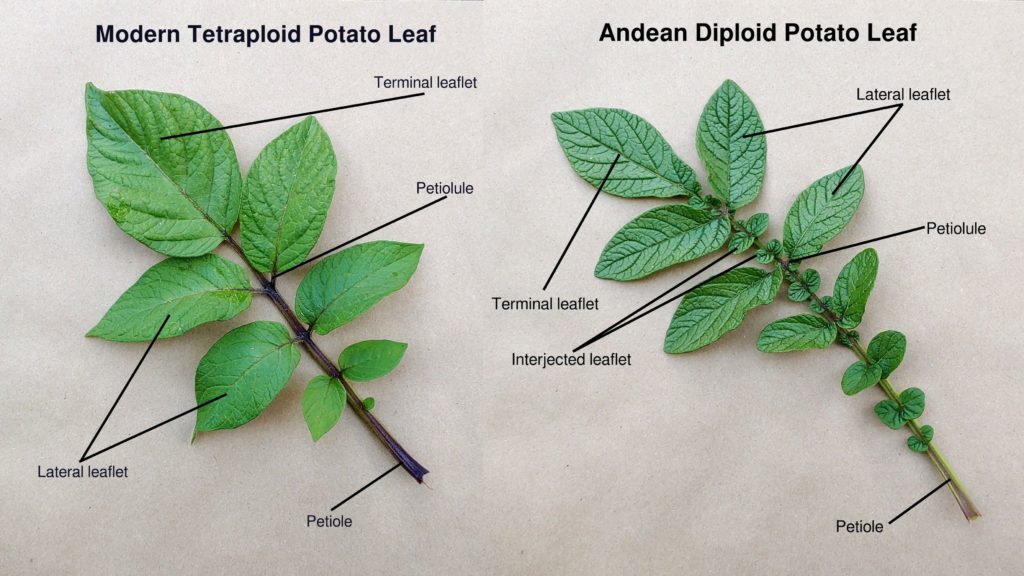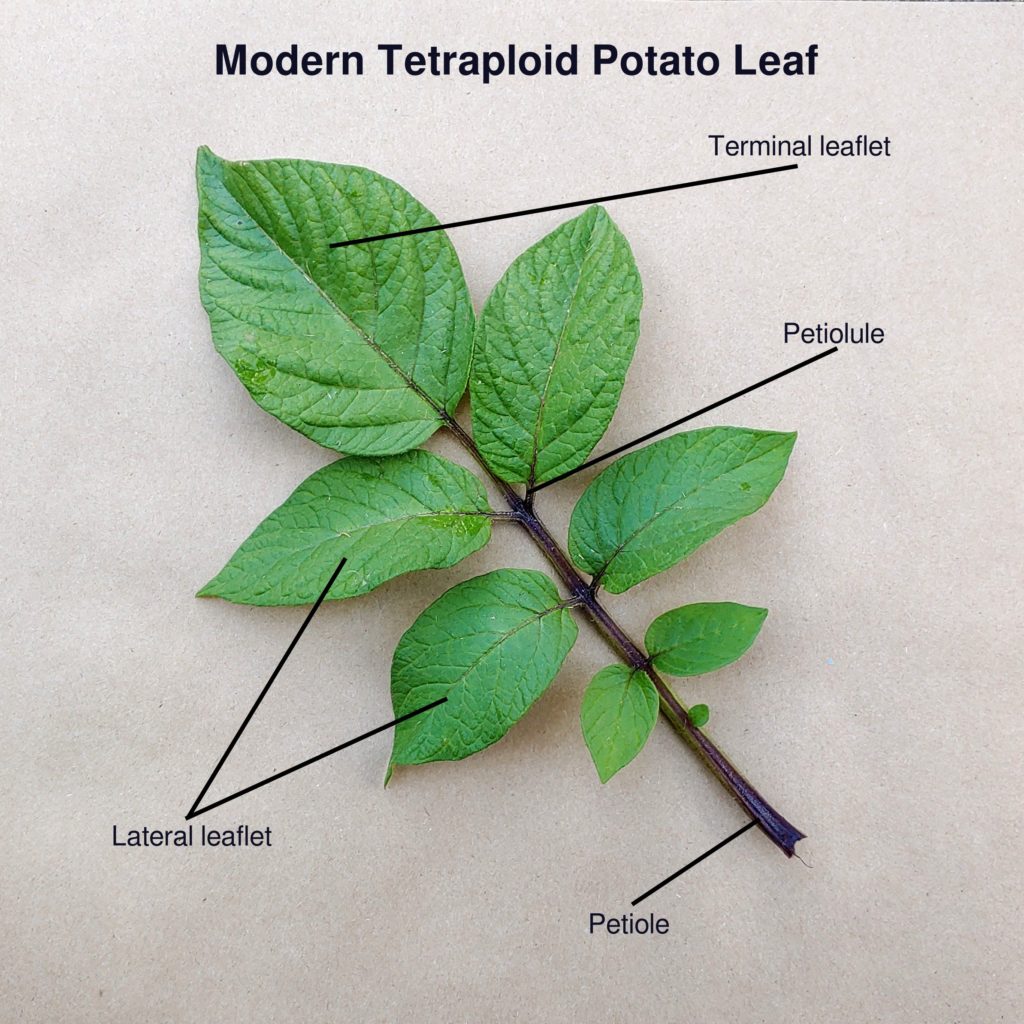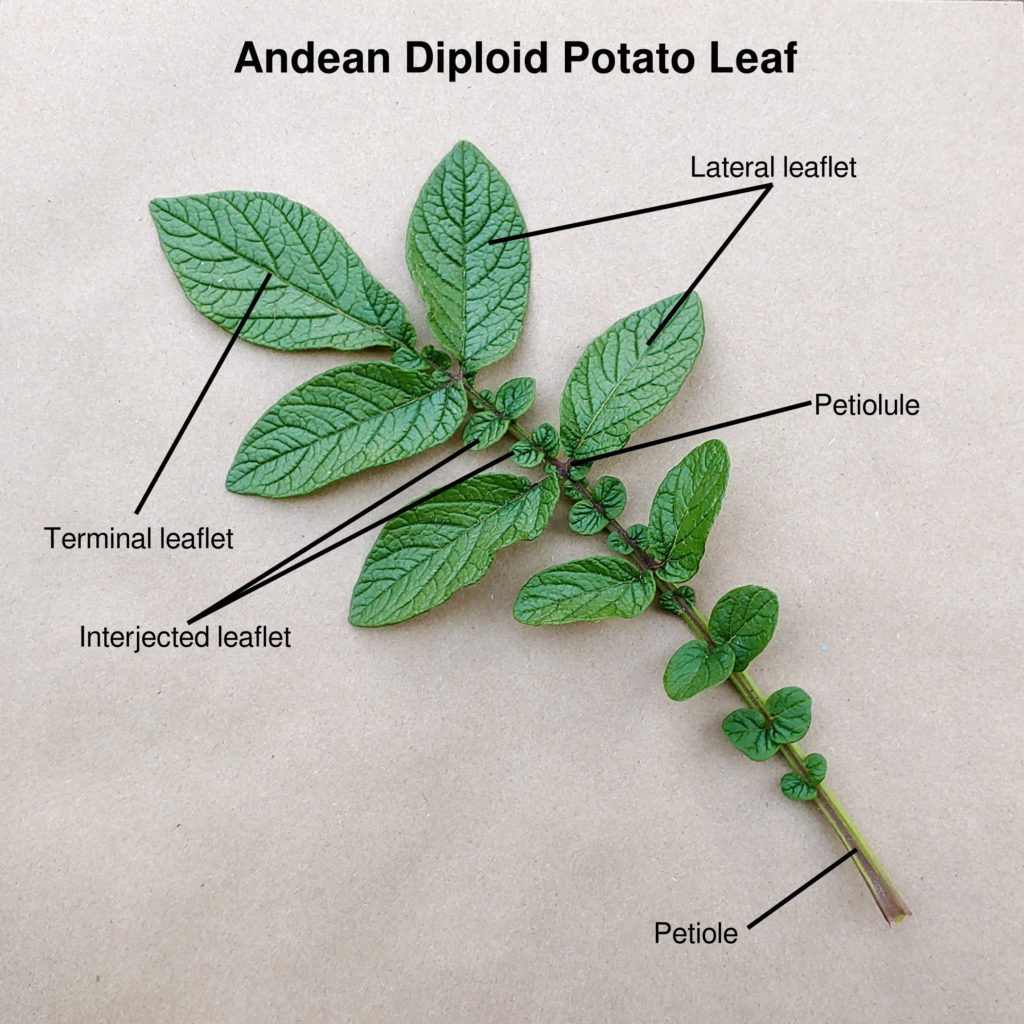Blog
A Closer Look at Potato Leaves
When I am talking to someone about a potato plant, at some point in the conversation, they will point to a plant and describe what they are looking at as a branch. Potatoes actually don’t branch very much. Many, particularly modern varieties, don’t branch at all. When most people point to a potato “branch,” they are often pointing at a leaf. Potato plants have compound leaves.
Let’s take a closer look at a modern, tetraploid potato and an Andean domesticated diploid potato as examples. This will also offer the opportunity to look at the differences between tetraploid and diploid potato leaves.
The modern, tetraploid potato can have tremendous variation in its leaf shape and arrangement, but this is a good example. The potato leaf above consists of eight leaflets. There is a terminal leaflet at the distal end of the leaf and seven more lateral leaflets. The number of lateral leaflets can vary a lot, from two to at least 18 and probably more. The leaflets of tetraploid potatoes tend to be larger and, particularly, broader than domesticated diploid potatoes.
Diploid potato leaves differ from tetraploid leaves in a number of ways, but there is overlap between the two at the extreme. As you can see, the leaflets of diploid potatoes tend to be more narrow. They also tend to have a greater number of leaflets than tetraploid potatoes, particularly modern tetraploid. Diploid potatoes also almost always have interjected leaflets, a feature that is sometimes missing completely from modern potatoes, as in the example above. Interjected leaflets are simply smaller pairs of leaflets that occur in between the larger lateral leaflets. By my count, this leaf has twelve lateral leaflets and eighteen interjected leaflets.




I have one potato plant that I grew from true potato seed (Bora Valley) that has leaves that look like a cherry tomato, but hairless. When I transplanted it, there were small purple potatoes already forming.
Nobody believes me that it’s a potato.
Have you ever heard of this?
Potato leaves can be extremely variable in appearance and are closely related to tomatoes, so I don’t find it too surprising. If there were tubers, then it is definitely a potato.
Bora Valley is a wild species hybrid with 1/4 genetic contribution from Solanum stoloniferum. It is quite likely that the different leaf shape you are seeing is a throwback to S. stoloniferum.
I am growing 10 plants from tetraploid TPS under T-5 lamps and am hoping to harvest tubers for spring planting. They are from a Sarpo axona mother plant. At 56 days from planting, they show great variation in morphology; some are leggy with small leaves, some are bushier and some have axial growth. They are from 2″ to 6-1/4″ tall. Is it possible to predict at this stage the productivity (tuber yield) of the plants? Could I cull the less desirable ones? Thanks!